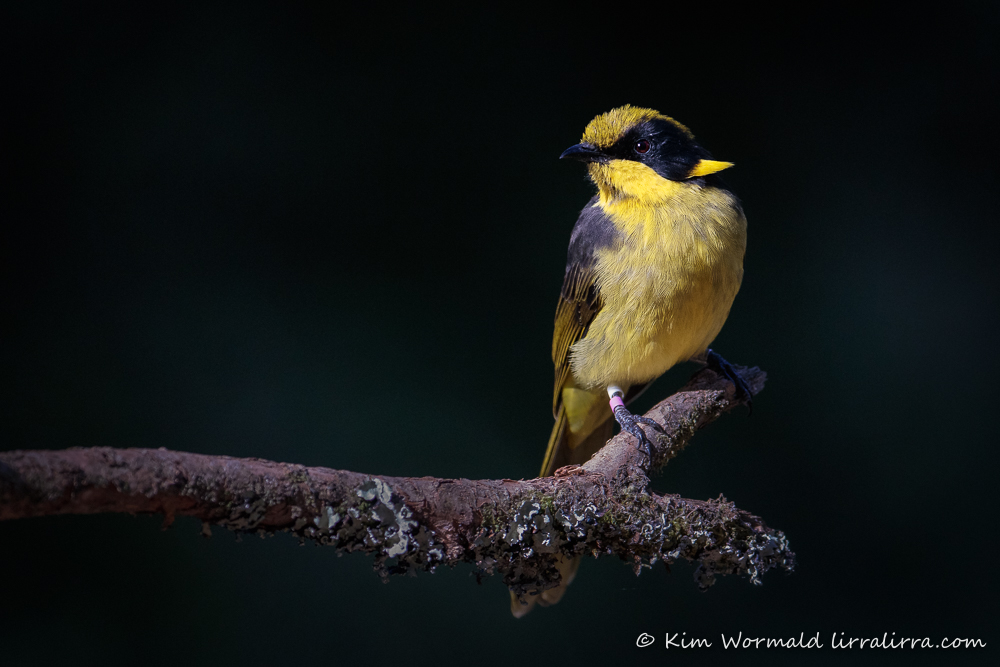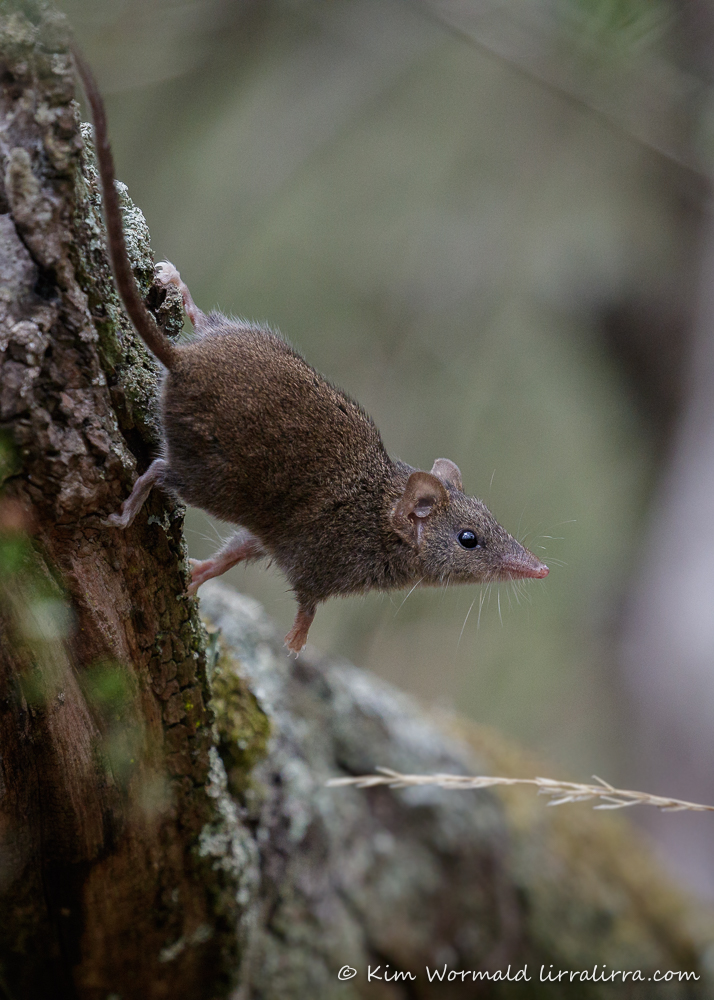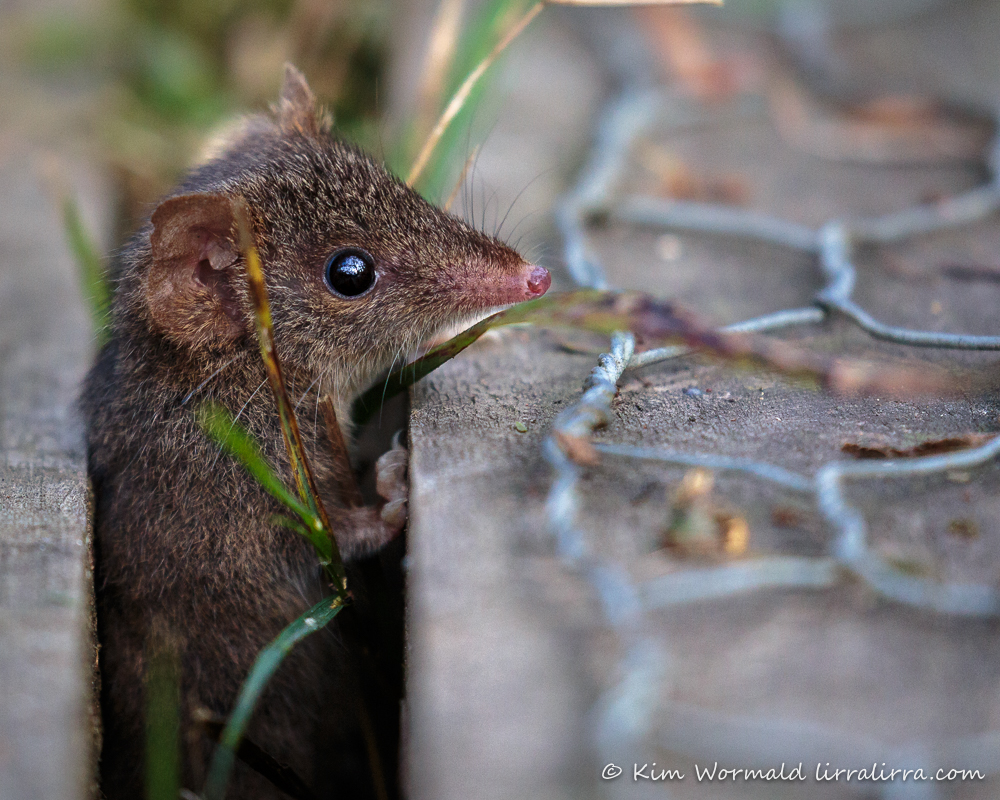Helmeted Honeyeaters are Victoria’s avian emblem and they are critically endangered.

Helmeted Honeyeater (Lichenostomus melanops cassidix)
1/800, f/5.6, ISO 1600
I like the symbolism in the image above with the critically endangered bird staring at us from the darkness. I’ve been honoured to have worked with the HeHo team for several years. I still remember the buzz I felt when I saw my first Helmeted Honeyeater in the wild back in 2004.
Each bird is banded for individual identification and comprehensive data is collected each week relating to which birds are feeding at the stations along with any signs of unusual behaviour. Please contact me if you would like to be part of the supplementary feeding program and I will forward your details to the coordinator. Or you could contact Friends of the Helmeted Honeyeater for more information.

Agile Antechinus (Antechinus agilis)
1/640, f/6.3, ISO 3200
The main issue facing the Helmeted Honeyeater is loss of habitat. Habitat restoration is ongoing, as is extensive work with water levels and feral pest control. Some natives critters also cause issues, including birds of prey, snakes and even tiny antechinus.
A couple of years ago I was shocked to see what I initially thought was a Helmeted Honeyeater being swallowed by a Laughing Kookaburra; the meal was an Eastern Yellow Robin. Eggs and nestlings are susceptible to predation from several bird species along with the occasional snake and antechinus. During the breeding season adult hehos will vigorously defend their nesting areas against antechinus. It is fascinating to watch and makes it obvious that these tiny marsupials pose a very real threat. It’s also fascinating to watch Agile Antechinus fight each other, they become a frenzied ball, like a furious, fluffly tennis ball.
 Agile Antechinus (Antechinus agilis)
Agile Antechinus (Antechinus agilis)
1/1000, f/5.6, ISO 1600
Friends of the Helmeted Honeyeater created a beaut calendar which included a range of images relating to the recovery program. The image above was one of my shots that was chosen this year. The Agile Antechinus may be cute to watch, they are crazily fast and comical, but they are attracted to the Wombaroo and as feeders we have to be especially mindful to ensure they can’t access the food. They are used to feeders using the boardwalks and will occasionally pop up between the boards. They only weigh about 20g and zip around so quickly that I always feel lucky to catch a glimpse of them.
Happy birding
Kim
~ thank you for visiting and commenting
~ use the subscribe box if you’d like to receive a weekly email when lirralirra is updated

Congratulations on having your amazing image included in the calendar. A wonderful way to support a totally deserving cause.
I am appalled at just how many of our native species numbers are precarious. They have a hard enough time without our ‘assistance’.
Australia has a dismal record relating to wildlife. I heard an awful statistic the other day that there are far more farm animals and pets in the world than wild creatures – I haven’t had the heart to check it, especially as it was from a reliable source. Anyways, on a brighter note, it is good to be part of the calendar, thank you
A beautiful photo of the honeyeater! And such great shots of the antichinus. The second one especially looks rather cheeky – I hope they don’t get up to too much mischief out there!
He, oh or maybe she, really does look cheeky! I don’t see them all the time but when I do they are often very comical to watch as they scurry and leap around the bush – I’m sure a lot of what they get up to would be considered ‘mischief’ by the hehos
Absolutely wonderful images! Your posts are always educational and beautiful!
Thank you Catarina. Sharing nature-time with people like you is such a pleasure